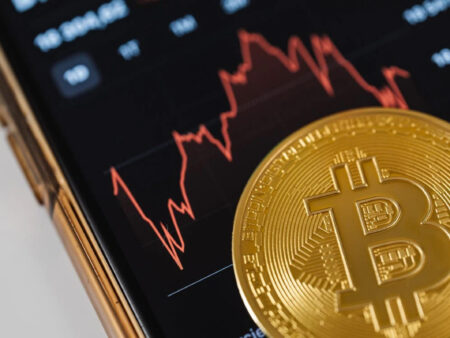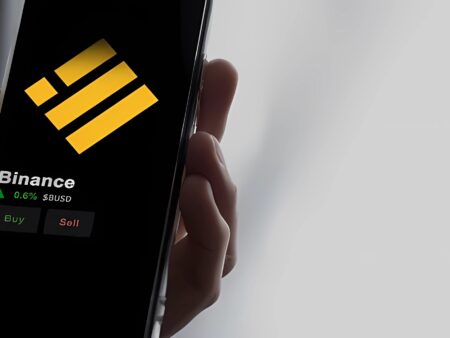Understanding the Security Features of Binance Exchange

Binance, one of the largest cryptocurrency exchanges in the world, employs a variety of security features designed to protect users’ assets and personal information. Firstly, the exchange utilizes two-factor authentication (2FA), a critical layer of security that requires users to provide a second form of identification when logging in. This may involve a text message or an authentication app, significantly lowering the risk of unauthorized access.
Additionally, Binance employs an advanced anti-fraud system that monitors transactions for suspicious activity. This system can detect unusual trading patterns and automatically alert users, which can help mitigate potential threats before they escalate. Furthermore, the platform utilizes cold storage solutions for a significant portion of its digital assets. By keeping the majority of funds offline, Binance reduces the risk of hacks that could target online wallets.
Binance also offers a Security Fund known as the Secure Asset Fund for Users (SAFU). Established in 2018, this fund is designed to protect users in the event of a breach or loss of funds, demonstrating Binance’s commitment to safeguarding its users’ investments. When users trade on the platform, a small percentage of trading fees is allocated to the SAFU, ensuring that funds are available for emergencies.
Moreover, the exchange regularly undergoes security audits and employs a dedicated security team that works around the clock to identify and address vulnerabilities. They also encourage users to adopt best practices for online security, furthering their commitment to a safer trading environment. Regular updates and communication regarding potential threats help maintain transparency and build trust among users.
In addition to these measures, Binance has implemented withdrawal whitelist features that allow users to specify which wallets can receive their funds. This added layer of control helps prevent unauthorized withdrawals. With an emphasis on protecting users, Binance continually evolves its security infrastructure to adapt to the ever-changing landscape of cyber threats.
Understanding these security features is crucial for users to assess the overall safety of trading on Binance. While no platform can guarantee absolute security, Binance’s multifaceted approach to safeguarding assets and data reflects its commitment to user protection.
Historical Security Breaches: What You Need to Know

Despite its extensive security measures, Binance has not been immune to breaches. One of the most notable incidents occurred in May 2019 when hackers stole over $40 million worth of Bitcoin. The breach exploited various security vulnerabilities and involved a combination of phishing and other tactics. In response, Binance quickly halted all withdrawals, conducted a thorough investigation, and utilized its SAFU to reimburse affected users, showcasing its commitment to customer care.
The incident prompted Binance to implement stricter security protocols, including more robust monitoring systems and user education on spotting phishing attempts. However, this breach raised questions about the security of centralized exchanges as a whole, and it reminded users that even the most secure platforms can be vulnerable.
In 2020, Binance faced scrutiny from regulatory bodies across the globe, with some governments expressing concerns about the exchange’s security measures and compliance with local laws. This attention highlighted the need for robust security measures to build trust with both users and regulators. As a centralized exchange, Binance has the responsibility to ensure that its security protocols meet industry standards.
Moreover, smaller exchanges that have suffered breaches remind users of the risks associated with trading in a volatile market. While Binance has the resources to recover from significant breaches, many lesser-known exchanges may not afford the same level of security, putting users’ funds at greater risk. This reality underscores the importance of researching exchanges thoroughly before committing funds.
In light of these historical breaches, users must recognize the importance of taking personal responsibility for their security. Utilizing features such as 2FA and withdrawal whitelists can enhance their protection against potential risks. Despite past incidents, Binance has shown resilience and adaptability, continuously working to improve its security measures.
Understanding the historical context of security breaches can help users navigate the complexities of cryptocurrency trading more effectively. By remaining vigilant and informed, users can mitigate risks associated with trading on Binance or any other exchange.
Regulatory Oversight: How It Affects Binance’s Safety

Regulatory oversight plays a critical role in the safety and security of cryptocurrency exchanges, including Binance. With governments worldwide increasingly scrutinizing the cryptocurrency industry, Binance has faced a range of regulatory challenges. These challenges have prompted the exchange to adapt its operations and enhance its compliance measures, impacting overall security for users.
In 2021, Binance experienced heightened regulatory pressure, leading to restrictions in several countries. Notably, nations such as the UK and Japan issued warnings about the exchange’s operations, citing concerns regarding its regulatory compliance. This scrutiny can have a dual effect: it may encourage Binance to bolster its security measures to satisfy regulators, while also raising concerns among users about the long-term viability of the platform.
Regulatory compliance often involves adhering to anti-money laundering (AML) and know your customer (KYC) regulations. By implementing these measures, Binance not only protects its users but also contributes to the overall integrity of the cryptocurrency ecosystem. These regulations require the platform to verify the identities of its users, reducing the risk of fraudulent activities and enhancing the safety of transactions.
Furthermore, the evolving nature of regulations worldwide influences how exchanges manage their security protocols. Exchanges like Binance must remain adaptable and responsive to changes in regulatory frameworks to maintain compliance. This need for vigilance may lead to additional investments in security infrastructure and user safety features, ultimately benefiting users.
Despite the challenges posed by regulatory oversight, it can also foster trust among users. A regulated exchange is often perceived as safer due to its adherence to legal standards. This perception can encourage more users to trade on the platform, contributing to its growth and, consequently, its investment in enhanced security protocols.
As Binance navigates regulatory scrutiny, the exchange has demonstrated a commitment to evolving its practices. For users, this means increased safety measures and a more secure trading environment, underscoring the importance of regulatory compliance in the cryptocurrency industry.
User Reviews: Trustworthiness and Customer Experiences

User reviews and experiences play a vital role in assessing the trustworthiness of Binance. Overall, reviews reflect a mixed sentiment among users, with many praising Binance for its extensive range of features and user-friendly interface. However, concerns regarding customer support and security incidents have also emerged, which can significantly influence user perceptions.
Many users appreciate the convenience and efficiency of Binance’s platform. High trading volumes and liquidity enable quick transactions and competitive prices, making it an attractive option for both novice and experienced traders. The ability to access multiple cryptocurrencies and trading pairs further enhances the exchange’s appeal.
On the other hand, some users have reported challenges with customer support, particularly during high-traffic periods or following security incidents. Delays in responses or inadequate resolution of issues can lead to frustration among users, impacting their overall trust in the platform. This situation underscores the importance of responsive customer service in building a trustworthy relationship with users.
Concerns about security breaches have also affected user perceptions. While some users acknowledge Binance’s efforts to improve its security postures following past breaches, others remain cautious due to fears of potential risks. These concerns highlight the necessity of transparent communication from the exchange, particularly when incidents occur.
A significant aspect of user reviews is the emphasis on personal responsibility for security. Many users recognize the importance of utilizing security features such as 2FA and withdrawal whitelists, which can greatly enhance their protection. This focus on individual accountability suggests that while the exchange can implement robust security measures, users must also play an active role in safeguarding their accounts.
Ultimately, user reviews serve as a valuable resource for potential Binance users to gauge the exchange’s reliability. By considering both positive and negative experiences, prospective users can make informed decisions about whether Binance aligns with their trading needs and security preferences.
Best Practices for Safeguarding Your Binance Account

While Binance invests heavily in security measures, users must also take proactive steps to safeguard their accounts. Adopting best practices can significantly reduce the risk of unauthorized access and enhance overall account security. Here are some essential strategies for Binance users:
- Enable Two-Factor Authentication (2FA): Utilizing 2FA adds an extra layer of security by requiring a second form of identification during login. This can be done through authentication apps or SMS alerts.
- Use Strong, Unique Passwords: Creating a strong password that includes a mix of letters, numbers, and symbols can deter potential hackers. Avoid reusing passwords from other accounts to minimize risks.
- Beware of Phishing Attempts: Be vigilant against phishing scams that may attempt to steal your login credentials. Always verify URLs and avoid clicking on suspicious links received via email or social media.
In addition to the above practices, users should consider implementing withdrawal whitelists. This feature allows users to specify which wallets can receive funds, providing an added layer of protection against unauthorized transactions.
Regularly reviewing account activity is also crucial. Users should monitor for any unusual transactions or login attempts, enabling them to act quickly in the event of suspicious activity. Setting up alerts for withdrawals or significant account changes can further enhance security.
Lastly, staying informed about the latest security trends and Binance updates is essential. Subscribing to official communications from Binance will ensure you are aware of any new security features or potential risks.
By adopting these best practices, Binance users can significantly bolster their account security and protect their investments in an ever-evolving digital landscape.
Future Outlook: Is Binance Evolving in Terms of Security?

As the cryptocurrency landscape continues to evolve, so too does Binance’s approach to security. The exchange has exhibited a proactive stance in adapting to emerging threats and regulatory demands, aiming to enhance user safety and build trust within the community. This commitment to security evolution is critical for maintaining its position as a leading cryptocurrency exchange.
One of the most notable trends is the increasing focus on regulatory compliance. Binance has begun collaborating with local regulators in several jurisdictions to align its operations with legal requirements. This shift not only enhances the exchange’s credibility but also fosters a safer trading environment for users.
Furthermore, Binance has invested in advanced technologies such as artificial intelligence and machine learning to bolster its security infrastructure. These technologies can analyze vast amounts of data to identify patterns and anomalies, enabling the exchange to respond swiftly to potential threats. As cyber threats










